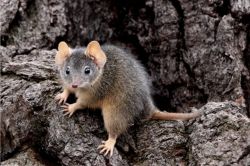Landscape ecology
Bennett Lab
Lab leader
Our research investigates how landscape structure and landscape change affect the ecology and conservation of native fauna. An innovative theme has been to pioneer a 'whole of landscape' approach, in which we compare the biota of 'whole landscapes' that differ in the extent, configuration and composition of native vegetation. We have used this approach, often in collaboration with land-management agencies, to identify landscape patterns most likely to sustain native fauna in regions experiencing change associated with agricultural land-use, wildfire, and urban development.
Research areas and major projects
a) Landscape change and nature conservation in agricultural environments
Our major projects in rural environments include:
- Landscape Pattern Project – has tracked woodland birds in 24 rural landscapes (10 x 10 km) over a decade, spanning the millennium drought. We have identified the properties of landscapes that enhance the resistance and resilience of species to drought, and the critical role of streamside vegetation.
- Revegetation in Rural Landscapes – investigating the benefits of landscape-scale revegetation in farmland for woodland birds and other species.
- Linear Habitats – the relative importance of remnant linear vegetation, along roads and streams through farmland, for woodland birds and native bees.
- Land-use Change – the consequences of different types of land-use trajectory (dairying grazing, horticulture, urbanising, plantations) within a single region, for the avifauna.
 b) Fire ecology
b) Fire ecology
In collaboration with Professor Mike Clarke, we are studying the effects of fire and fire regimes on the conservation of flora and fauna in several ecosystems. Major projects include:
- Experimental Mosaic Burning in Box-Ironbark forests – using an experimental approach to create different fire mosaics and evaluate their impacts on flora, fauna and forest structure in dry box and ironbark forests.
- Faunal Refuges Project – investigating the role of different types of 'refuges', and the role of planned burning in creating refuges, in the fire scar from the 2009 Black Saturday wildfire.
- Foothills Forests and Fire – a major synthesis of data on fire ecology in foothill forests in Victoria.
- Mallee Fire and Biodiversity Project – this major project (7 PhD completions) used a 'natural experiment' to investigate the response of plant and animal communities of semi-arid 'mallee' ecosystems to different fire mosaics, and to time-since fire.

Yellow-footed Antechinus
Image by: Russ Jones.
c) Conservation biology of wildlife species and communities
A range of past and present projects have investigated the conservation biology of single species or communities in relation to spatial patterns in the landscape. Current projects include work on the Yellow-footed Antechinus (in relation to fire), Brush-tailed Phascogale (forest and agricultural land use) and the Superb Lyrebird (as an ecological engineer in forests).
